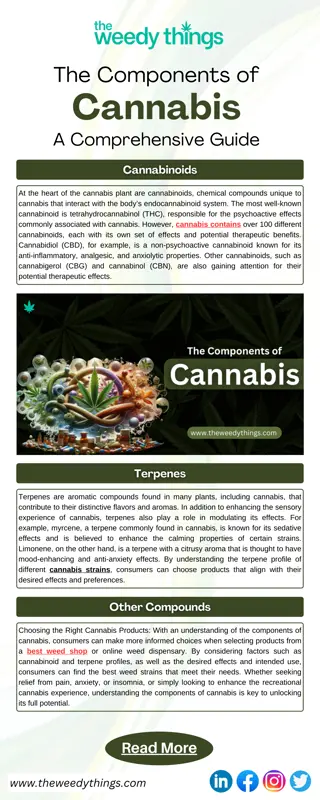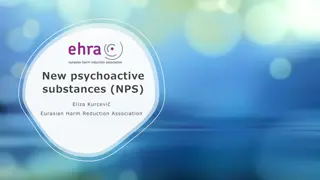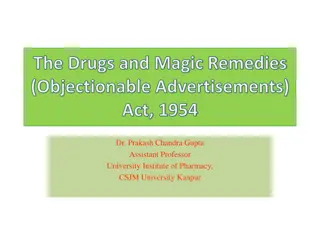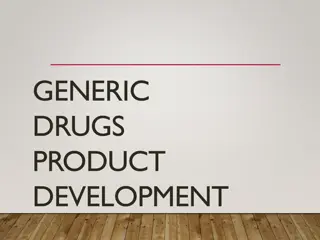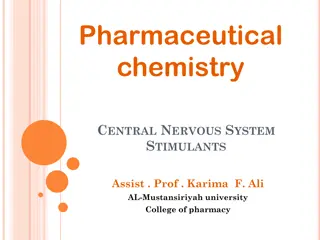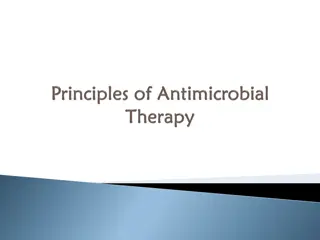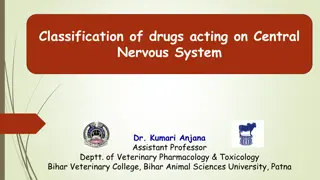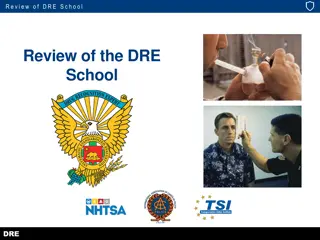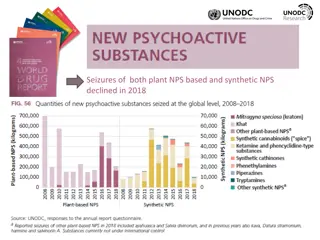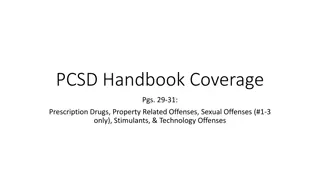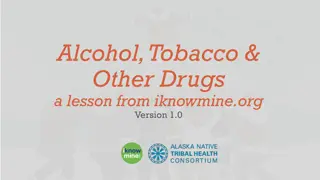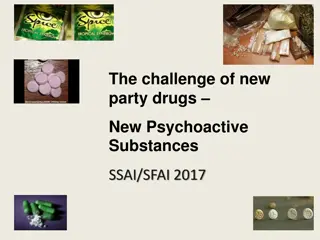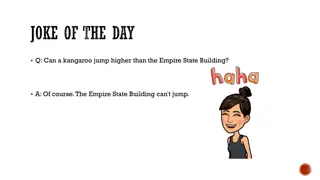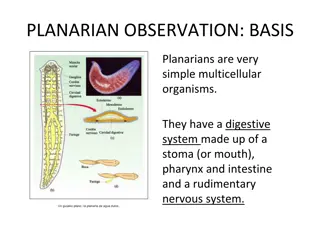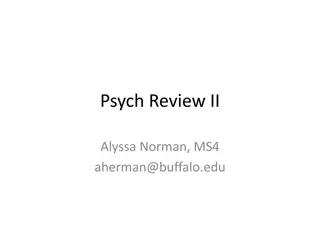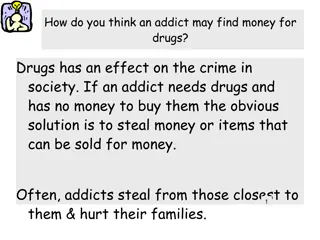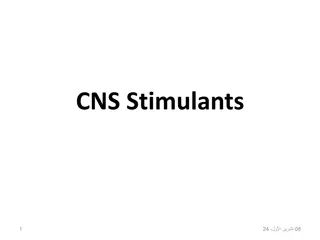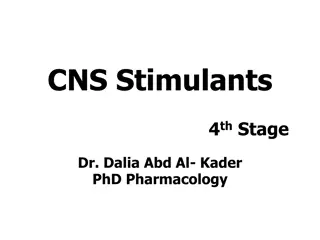Psychoactive Drugs: Depressants, Stimulants & Hallucinogens
Delve into the world of psychoactive drugs, exploring the effects of depressants, stimulants, and hallucinogens on mental, emotional, and behavioral functioning. Learn about the development of tolerance, physical and psychological dependence, and withdrawal symptoms associated with continued use. Discover the dangers of depressants like alcohol, the most commonly abused substance. Gain insight into the signs of alcohol abuse and the detrimental impacts on health, work, and personal life.
Download Presentation

Please find below an Image/Link to download the presentation.
The content on the website is provided AS IS for your information and personal use only. It may not be sold, licensed, or shared on other websites without obtaining consent from the author. Download presentation by click this link. If you encounter any issues during the download, it is possible that the publisher has removed the file from their server.
E N D
Presentation Transcript
Consciousness OBJECTIVE: PROVIDED NOTES & AN ACTIVITY, SWBAT CHART NAMES & EFFECTS OF DEPRESSANTS, STIMULANTS, & HALLUCINOGENIC DRUGS AGENDA: -DO NOW -NOTES -ACTIVITY Topic: Psychoactive Drugs
Consciousness: Psychoactive Drugs PART ONE
Consciousness: Psychoactive Drugs Psychoactive Drugs Chemical substances that modify mental, emotional or behavioral functioning Continued use of a psychoactive drug produces tolerance; thus creating a situation in which greater quantities are needed to produce the desired effect Leads to ?
Consciousness: Psychoactive Drugs Physical Dependence Condition occurring when a person s body becomes unable to function normally without a particular substance Psychological Dependence The feeling that a drug is needed to continue a feeling of emotional or psychological well-being Withdrawal Physical symptoms that can include nausea, pain, tremors, crankiness & high blood pressure, resulting from the lack of an addictive substance
Depressants: Down in the Valley
Depressants: Down in the Valley Depressants A class of drugs that decrease the functioning of the central nervous system
Depressants: Down in the Valley Alcohol The most commonly used & abused depressant 10 t0 20 million American suffer from alcoholism Impact of Alcoholism Health risks (liver, heart, brain, etc.) Loss of work time, loss of job, loss of economic stability MANY, MANY, MANY RISKS
Depressants: Down in the Valley Signs of Alcohol Abuse Range from Binge drinking + drunkenness Guilt associated with drinking Drinking in the morning and/or drinking alone Drinking to recover from drinking Drinking enough to have blackouts or memory loss Lying about drinking Sensitivity to comments What constitutes a drink? (see handout)
Depressants: Down in the Valley Barbiturates/Major Tranquilizers Drugs that depress the activity of the central nervous system, reducing anxiety but impairing memory and judgment Sedative effects Range from mild sedation or sleepiness to unconsciousness or coma Highly addictive; users rapidly develop a tolerance Examples Nembutal Seconal
Depressants: Down in the Valley Benzodiazepines/Minor Tranquilizers Drugs that lower anxiety and reduce stress Considered safer than Barbiturates; prescribed much more often Examples Valium Xanax Librium Minor tranquilizers can STILL be very addictive & dangerous
Depressants: Down in the Valley Opiates (Narcotics) Opium and its derivatives (morphine and heroin); depress neural activity, temporarily lessening pain and anxiety Bind to & stimulate receptor sites for endorphins; when brain is repeatedly flooded with an artificial opiate, it eventually stops producing its own Highly addictive & associated with severe withdrawal Treatment options? Methadone
Stimulants: Up, Up & Away
Stimulants: Up, Up & Away Stimulants A class of drugs that cause either the sympathetic division or the central nervous system (or both) to increase levels of functioning, at least temporarily Excite neural activity & speed body functions Uppers
Stimulants: Up, Up & Away Amphetamines Stimulates neural activity, causing accelerated body functions, as well as energy & mood changes Synthesized in laboratories DO NOT provide extra energy; simply cause people to burn energy reserves; leads to an inevitable crash Methamphetamine Related compound; sometimes prescribed to treat ADHD, obesity and narcolepsy DANGER: Crystal Meth
Stimulants: Up, Up & Away Cocaine A natural drug that induces euphoria, energy, power & pleasure followed by a crash Leads to agitated depression; the high depletes the brain s supply of dopamine, serotonin & norepinephrine Highly addictive Three basic signs of physical dependency Compulsive use Loss of control Disregard for consequences
Stimulants: Up, Up & Away Methylenedioxymethamphetamine (MDMA) Also known as Ecstasy Stimulant (and mild hallucinogen) Produces euphoric high Can damage serotonin- producing neurons, which results in a permanent deflation of mood and impairment of memory Known as the Club Drug
Stimulants: Up, Up & Away Caffeine Naturally occurring in coffee beans, tea leaves, cocoa nuts & at least 60 other types of plants Mild stimulant; increases heart and breathing rates Found in coffee, tea, most sodas, chocolate & many over-the-counter drugs
Stimulants: Up, Up & Away Nicotine Relatively mild, though toxic stimulant; produces a slight rush or sense of arousal; raises blood pressure & accelerates heart rate; also stimulates the release of adrenalin Nearly 438,000 Americans die from nicotine-related illnesses each year According to the CDC (2002), that s more people than those who die from accidents, alcohol, cocaine, heroin and other drug abuse, AIDS, suicide and homicide COMBINED Rates of usage? Addictive power?
Hallucinogens: Higher & Higher
Hallucinogens: Higher & Higher Hallucinogens A class of drugs that cause false sensory messages (hallucinations), altering the perception of reality Example In some cases sensations can cross over each other (e.g. colors have sound, sounds have smells, etc.)
Hallucinogens: Higher & Higher Lysergic Acid Diethylamide (LSD) A synthetic hallucinogen; extremely potent Synthesized from a grain (rye) fungus called ergot Takes people out of the real world & puts them into a world of the brain s creation; NOT ALWAYS A PLEASANT PLACE! Phencyclidine (PCP) A synthetic drug so dangerous that it became useful only as an animal tranquilizer ***Depending on its dosage, can be a hallucinogen, stimulant, depressant or analgesic drug
Hallucinogens: Higher & Higher Marijuana (Cannibas Sativa) Mild hallucinogen derived from the leaves and flowers of a particular type of hemp plant Best known and most commonly abused hallucinogen Effects relatively mild compared to others Mild euphoria and relaxation Altered time sense Mild visual distortions Associated with high levels of psychological dependency & low (no) levels of physical dependency
Mouse Party http://learn.genetics.utah.edu/content/ad diction/mouse/
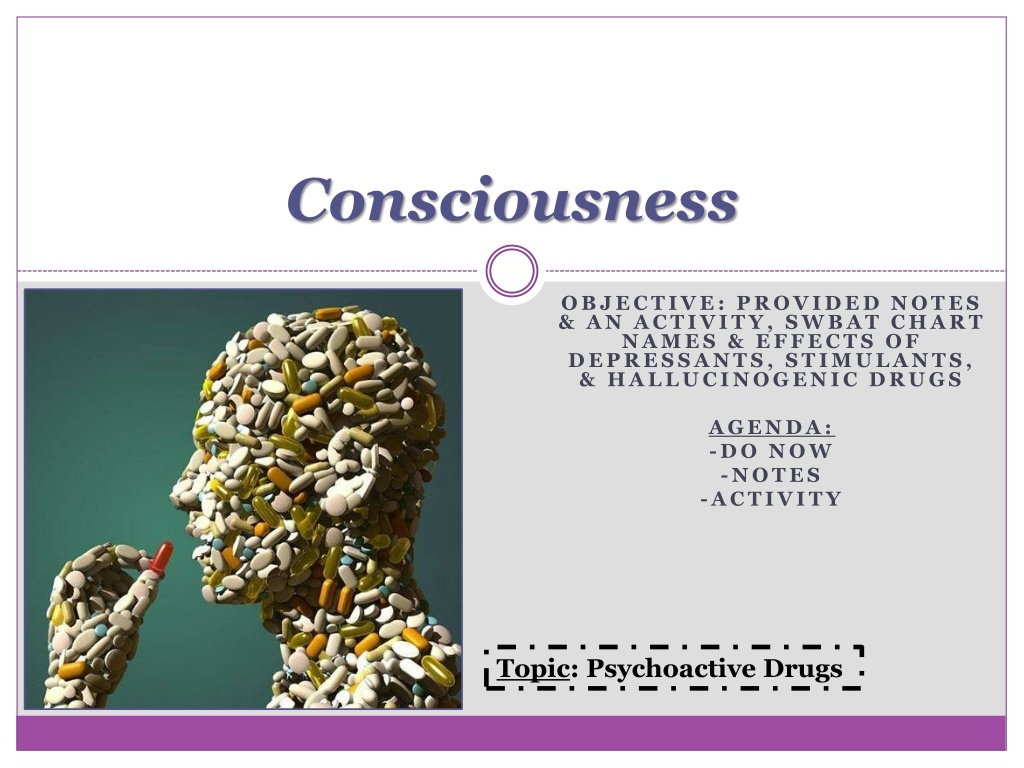
 undefined
undefined








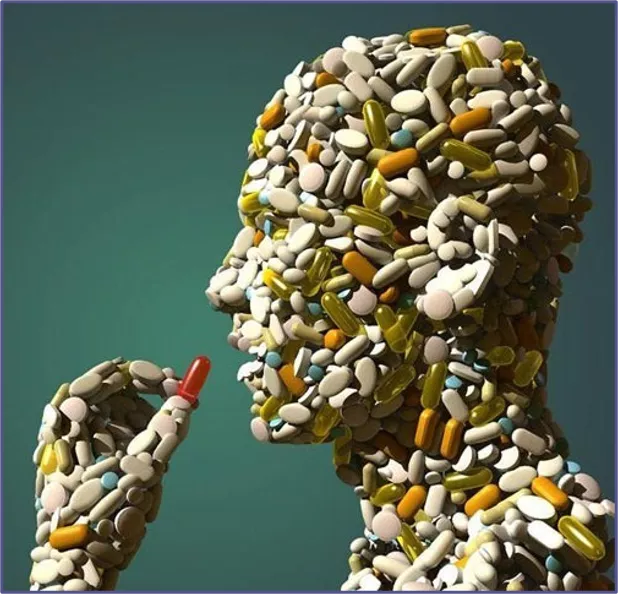

 undefined
undefined












